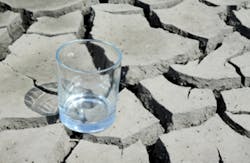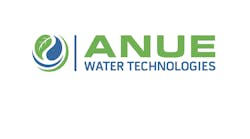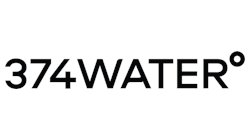For those who might not remember, the last time California faced a severe drought similar to the one the state is suffering through today was in 1977. Then, as today, virtually the entire state was affected, and to cope, very stringent water restrictions were enacted.
At that time, there were few options for reducing water consumption other than to ask building occupants to use water more responsibly. It was a very difficult period for the state, but fortunately, plentiful rainfall in 1978 and 1979 put an end to the drought.
Once the drought was declared over, most people and businesses quickly forgot what they had just endured and returned to their old ways of using water. Then just 10 years later, the state was hit with another very dry period and conservation again was necessary. More recently, beginning around 2010, it became clear to some observers that the state was in for another dry spell.
However, dealing with these droughts is different today in California as well as in other drought-plagued areas around the country. That’s because today, technologies have been developed that were not available or even fathomed in the 1970s or 1980s. These innovations not only reduce water consumption but also help people become much more water conscious, so they use water more resourcefully and efficiently.
Leadership and planning
One of the most important catalysts for permanent change in California occurred when local and state water officials realized something had to be done. Several people “stepped up to the plate” and helped make significant changes on county and state levels, increasing water investments, portfolios and particularly water storage capabilities.
These leaders developed aggressive, long-term water conservation programs for residences and businesses, including commercial buildings. The programs have helped stretch water supplies and have been so successful that many areas of the state are using about the same amount of water today as they were 10 and 20 years ago, even with population growth. There has also been greater exploration for surface water supplies and groundwater resources, making the California less dependent on rainfall and other more traditional water sources.
Additionally, state and local officials realized they must now view water as a state issue and not a local issue. Traditionally, local communities and counties had been responsible for their own water supplies. Today, state water officials are working to change this so water-rich areas of the state can help water-poor areas when and as needed. The strategy is based on the belief that if one area of the state suffers from water shortages, it impacts the entire state’s economy.
New ways to save water
Building managers, when looking for places to conserve water, should start with where water is used the most in the majority of buildings — the restrooms. In the 1970s, few buildings installed aerators or similar devices to restrict the amount of water released from faucets. Today, the installation of aerators is one of the most significant and inexpensive steps a commercial facility can take to reduce water consumption and use water more efficiently. The typical faucet releases about three or more gallons of water per minute; with an aerator installed, this can be reduced to as little as half a gallon per minute — with minimal impact on user satisfaction.
But aerators are not a new technology. Rather, some of the most powerful new water-reducing technologies helping California and the nation to use water more efficiently include revolutionary toilet and urinal designs and sustainable landscaping systems.
According to the U.S. Environmental Protection Agency (EPA), older toilets still found in the U.S. use as much as 3.5 gallons of water per flush. Replacing these toilets with high-efficiency or dual-flush toilets, which feature a full flush for solids and a reduced flush for liquids, can save the country “nearly two billion gallons per day across the country … [and] save a family of four, on average, $2,000 in water bills over the lifetime of the toilets.” It can be assumed similar savings are possible in a commercial facility.
Urinals are another place where water consumption can be reduced. Traditional urinals can use 2.5 or more gallons of water per flush; low-flow urinal systems now release about one gallon of water. However, many suggest this is still too much water, wasting thousands of gallons per urinal each year. To remedy this situation, urinals using no water have been installed and have proven effective in many commercial settings in California, from office buildings and schools to hotels. When these urinals are installed and maintained correctly, water consumption is eliminated with no impact on indoor air quality, plumbing or user satisfaction.
Finally, for commercial facilities with landscaping, automatic drip-type irrigation systems are helping building owners reduce water consumption. With these systems, spray heads are eliminated and water is delivered directly to the roots of plants and vegetation. These systems also come with high-tech “rain” and soil moisture sensors so irrigation is only released when and as needed.
California’s missing crystal ball
While there is great hope, no one knows if California will have a “normal” winter with adequate rainfall this year or if the state will suffer its fourth year of drought. If it should be another dry year, the water shortages could become severe for the state’s businesses, commercial buildings and residences.
The good news is, with experience, leadership on the part of many state officials and new technologies, California is in a much better position to handle a serious drought than any other time in its history. What’s more, further innovations in water-conserving technologies will bolster California’s — and the U.S.’s — ability to withstand any future water shortages.
Niki Bradley is marketing manager for Waterless Co. Inc. She can be reached through her company’s website at www.waterless.com.


